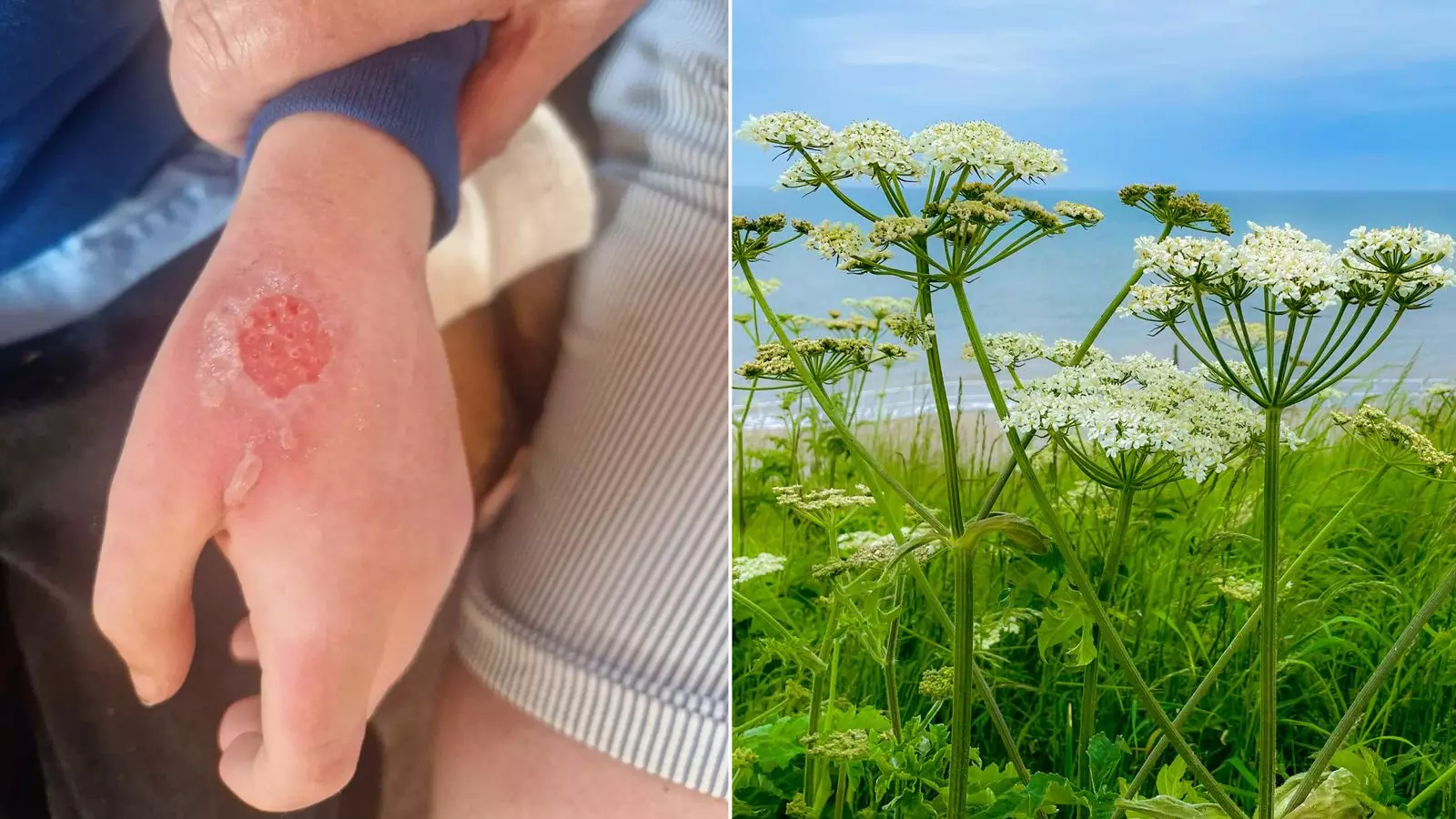A mother in Northern Ireland shared a harrowing experience involving her eight-year-old son, who suffered burns and blisters on his hands and arms after coming into contact with a dangerous plant believed to be giant hogweed. The incident occurred at The White Water on the Newry Road Kilkeel at the beginning of May, leaving the young boy scarred for life. The severity of the burns has left the mother, Danielle Bloomer-Rogers, worried that her son’s hands will never fully recover.
Giant hogweed, originally from southern Russia and Georgia, is known for its invasive nature and potential harm to humans. The plant’s sap contains chemicals that can cause photodermatitis, making the skin extremely sensitive to sunlight and leading to blistering, pigmentation, and persistent scarring. Despite its dangerous properties, four species of giant hogweed still exist in Britain, posing a significant risk to public health.
After the young boy’s encounter with the plant, his burns worsened over time, causing blisters to form and burst on his hands. Despite seeking medical advice, Mrs. Bloomer-Rogers expressed frustration with the lack of concern from doctors. The medical response was limited to keeping the burns moist, with little emphasis on the long-term effects of the plant’s toxins. This lack of awareness highlights a critical gap in knowledge regarding the potential dangers of giant hogweed.
In an effort to prevent future incidents, Mrs. Bloomer-Rogers reached out to the Newry, Mourne, and Down District Council, urging them to take action against the plant. However, to her dismay, the council failed to respond or take any measures to address the issue. Despite the mother’s plea for intervention, no signs were put up to warn the public about the presence of giant hogweed, leaving the community vulnerable to potential harm.
As a cautionary tale, Mrs. Bloomer-Rogers emphasized the need for parents to be vigilant when it comes to identifying hazardous plants like giant hogweed. She stressed the importance of educating oneself about the plant’s distinctive features to avoid accidental exposure. The difficulty in distinguishing between giant hogweed and non-toxic variants underscores the need for greater awareness and preventative measures to protect children and adults alike.
The story of Zach Bloomer-Rogers serves as a stark reminder of the potential dangers posed by giant hogweed. His traumatic experience highlights the lasting impact of a brief encounter with this hazardous plant and underscores the importance of proactive measures to prevent similar incidents in the future. By raising awareness, advocating for proper medical treatment, and urging local authorities to take action, we can work together to mitigate the risks associated with giant hogweed and safeguard our communities from harm.


Leave a Reply